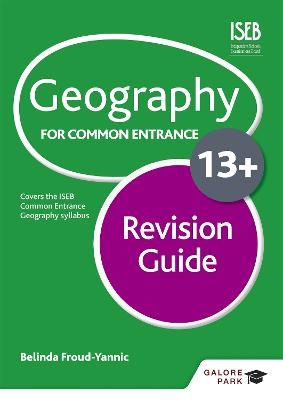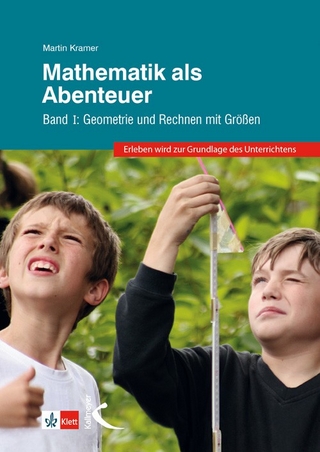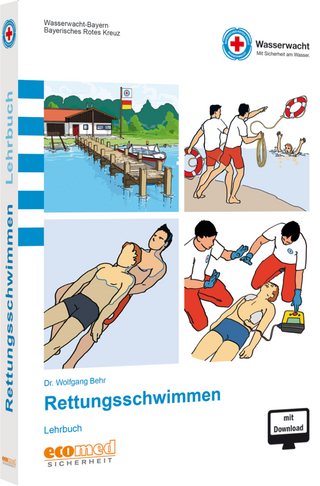
Geography for Common Entrance 13+ Revision Guide (for the June 2022 exams)
Galore Park Publishing Ltd (Verlag)
978-1-4718-2730-3 (ISBN)
- Titel ist leider vergriffen;
keine Neuauflage - Artikel merken
Exam Board: ISEB
Level: 13+
Subject: Geography
First Exam: Autumn 2015
This book provides ideal preparation for Geography Common Entrance and other entrance examinations at 13+.
Geography for Common Entrance 13+ Revision Guide reflects the style and content of the new ISEB Common Entrance syllabus and provides essential support and guidance for thorough exam preparation.
- Suitable for all ISEB 13+ Geography exams taken from Autumn 2015 onwards
- Endorsed by ISEB
- Consolidates all key information required for Common Entrance
- Features well-annotated illustration to help convey points
- Includes tips, advice and exam-style questions for focused revision
- Helps pupils perfect their exam technique and identify any areas requiring further study
Also available from Galore Park www.galorepark.co.uk
- Geography for Common Entrance 13+ Exam Practice Questions
- Geography for Common Entrance 13+ Exam Practice Answers
Belinda Froud-Yannic has been head of Geography at Thomas's School, Clapham since 2001.
Chapter 1: Earthquakes and volcanoes
1.1: The Earth’s structure, tectonic plates and plate boundaries
1.2: Types of volcano
1.3: Immediate effects of a volcanic eruption
1.4: Preparing for and reacting to a volcanic eruption
1.5: Why people live near volcanoes
1.6: Causes and effects of earthquakes
1.7: Preparing for earthquakes
1.8: Factors determining the severity of damage
1.9: Comparing an earthquake or volcano in a developing country with one in a developed country
1.10: Case study – Soufrière Hills volcano, Montserrat, 1995 to present
1.11: Case study – Mount Etna volcano, Sicily, 2013
1.12: Case study – Eyjafjallajökull volcano, Iceland, 2010
1.13: Case study – L’Aquila earthquake, Italy, 2009
1.14: Case study – Haiti earthquake, 2010
1.15: Case study – North East Japan earthquake and tsunami, 2011
Chapter 2: Weather and climate
2.1: The water cycle (hydrological cycle)
2.2: Rainfall types
2.3: Factors affecting temperature
2.4: A humid temperate climate (Britain)
2.5: A humid tropical climate
2.6: Microclimates
Chapter 3: Rivers and coasts
3.1: Rock types
3.2: Types of weathering
3.3: Features of the river basin
3.4: River processes
3.5: Features of the upper course
3.6: Features of the lower course
3.7: Coastal erosion
3.8: Coastal transportation
3.9: Coastal deposition
3.10: Causes of flooding – river and coastal
3.11: Effects of floods
3.12: Flood control and prevention
3.13: Case study – Boscastle floods, 2004
3.14: Case study – Flooding in Bangladesh, 2012
3.15: Case study – Hurricane Katrina (coastal flooding), 2005
3.16: Case study – Flooding in Tewksbury, 2007
Chapter 4: Population and settlement
4.1: Population statistics, terminology and factors that affect density
4.2: Causes of the UK’s increase in population since 1945
4.3: Functions of a settlement
4.4: Reasons for the site or situation of a settlement
4.5: Settlement hierarchy
4.6: Settlement patterns
4.7: Reasons why some settlements grow and others do not
4.8: Case study – Environmentally sensitive planning: East Village in Queen Elizabeth Olympic Park
Chapter 5: Transport and industry
5.1: Advantages and disadvantages of different modes of transport
5.2: Value of transport routes
5.3: Case study – High Speed 2
5.4: Case study – Heathrow third runway
5.5: Employment structure
5.6: Location of an industry
5.7: How economic activities can affect the environment
5.8: Sustainable economic development
5.9: Globalisation
5.10: Case study – Nike: a multinational company
Chapter 6: Ordnance Survey mapwork
6.1: Direction
6.2: Grid references
6.3: Distance
6.4: Area
6.5: Height and relief
6.6: Cross-sections
Chapter 7: Fieldwork
7.1: Fieldwork investigation
7.2: Fieldwork tips
7.3: Marking of fieldwork
| Erscheint lt. Verlag | 26.9.2014 |
|---|---|
| Verlagsort | Tenterden |
| Sprache | englisch |
| Maße | 208 x 294 mm |
| Gewicht | 400 g |
| Themenwelt | Schulbuch / Wörterbuch |
| ISBN-10 | 1-4718-2730-5 / 1471827305 |
| ISBN-13 | 978-1-4718-2730-3 / 9781471827303 |
| Zustand | Neuware |
| Haben Sie eine Frage zum Produkt? |
aus dem Bereich


